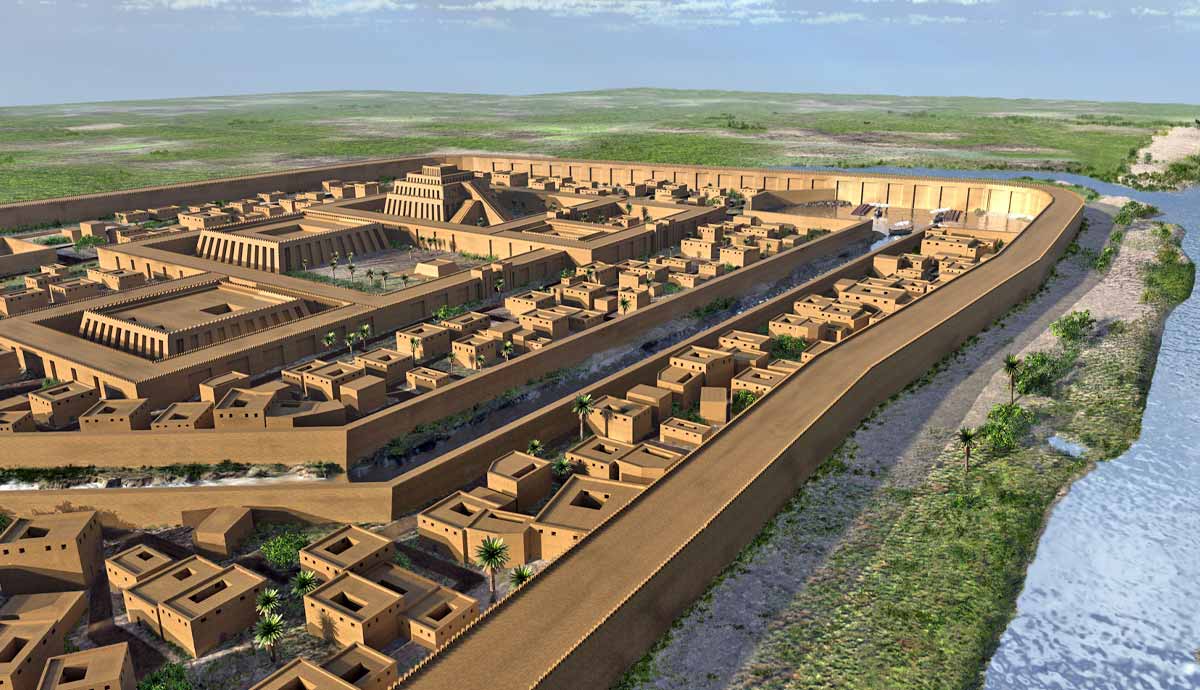Sumer vs. Indus Valley Which Is Older?
3d illustration of the ancient Sumerian city of UrThe question of the older civilization between the Sumer and the Indus Valley Civilizations is interesting as both are considered to be among the earliest human civilizations known to man. That said, they rose at different timelines. To determine which of them was older, it is important to consider numerous factors including but not limited to archaeological findings such as artefacts, writings, and building structures which help to reveal a lot about their way of life and timeline.A Timeline to the Sumerian CivilizationMap of Ancient Sumers boundaries within the greater Near East in 2350 BCE. Source: Age of EmpiresThe Sumer civilization was situated in Mesopotamia (now Iraq) and is often considered to be one of the earliest societies in the world. It began around 4500 BCE and grew steadily from about 4000 to 3100 BCE. During this time, the Sumerians invented some unique practices and elements such as the cuneiform form of writing, structured leadership models, and more robust economic and trade systems that relied on the use of money. When it came to leadership, their society was set up such that there were levels of power with the leaders and priests being at the top of the hierarchy. At the time, they used a variety of items for money that included silver and bronze coins and trade goods.The Sumerians also created the first major cities in the world. They included Eridu, Uruk, and Ur. The cities featured unique buildings such as ziggurats which were essentially pyramid-shaped temple towers. They also harnessed water from the Euphrates and Tigris rivers to irrigate their crops. The strategy enabled them to grow sufficient food-crops.Cuneiform tablet with a small second tablet: private letter, c.a. 20th-19th century B.C.. Source: The Metropolitan Museum of ArtThe invention of the cuneiform form of writing in the region from about 3200 BC also had a significant influence on how records were kept. The writing technique utilized a reed stylus and clay blocks. Initially, the writing technique was mainly used by the administration for record-keeping purposes such as taxation. Later on, however, it was used to write literature and record important events. One of the earliest literary works, The Epic of Gilgamesh, was written in the Sumerian language.A Timeline for the Indus Valley EmergenceThe Ziggurat of Ur as it looks today. During the 1980s, Saddam Hussein had the staircase and the facade reconstructed. Source: Middle East EyeThe Indus Valley Civilization began around 3300 BC and was situated in the Indus Valley. The civilization which is also widely referred to as the Harappan Civilization lasted many years from about 3200 to 1300 BC. That said, the civilization reached its peak around 2600 BC.Like Sumer, it was one of the first major civilizations on earth. Its extensive territory covered parts of modern-day Pakistan, India, and Afghanistan. The civilization is acknowledged by historians for its elaborate city-grids and architecture which were advanced for its time. Cities like Mohenjo-Daro and Harappa were, for example, built using standardized bricks and featured relatively elaborate drainage systems compared to previous civilizations.A CGI render of the Sumerian city of Uruk, focusing on the Temple of Inanna, a ziggurat in the center of Uruk. Source: Artefacts BerlinHowever, unlike the Sumerians, the Indus Valley people are a puzzle to experts as their writing has yet to be extensively deciphered. The Harappan writings found on their artefacts, for example, havent yet been completely understood. As such, not much is known about their religion, governance structures, and way of life. Even so, the items they left behind indicate an advanced society that also traded with other societies including those situated in Mesopotamia.Similarities Between the Indus and Sumerian CivilizationsA recently discovered fragment of a tablet of the Epic of Gilgamesh, Iraq. Source: The Slemani Museum, BaghdadEven though they existed in different regions, the Ancient Mesopotamia and the Indus Valley civilizations had many things in common. While they were far apart, the two civilizations came up within the same era. Looking at their city planning, both the Sumerians and the Indus Valley people built their cities in relatively similar ways. Their city centers had well-planned layouts and were often important hubs for trading and administration.Farming was also very important for the people in the two societies and they came up with effective ways to harness water from nearby rivers for domestic utility and irrigation purposes. While the Sumerians relied on the Euphrates and Tigris Rivers, the Indus Valley people utilized the Indus River. Trade was also very important for both groups. They carried out trade over long distances in order to obtain items like metals and cloth.The Tigris River, Photograph by Jane Sweeney. Source: National GeographicThey both also relied on writing techniques but in different ways. The Indus people used seals, for example, to formalize agreements, while the Sumerians wrote down administrative records and stories on clay tablets. In essence, both used writing for record-keeping purposes. In conclusion, it is safe to say that the Sumerian Civilization preceded the Indus Valley Civilization.


